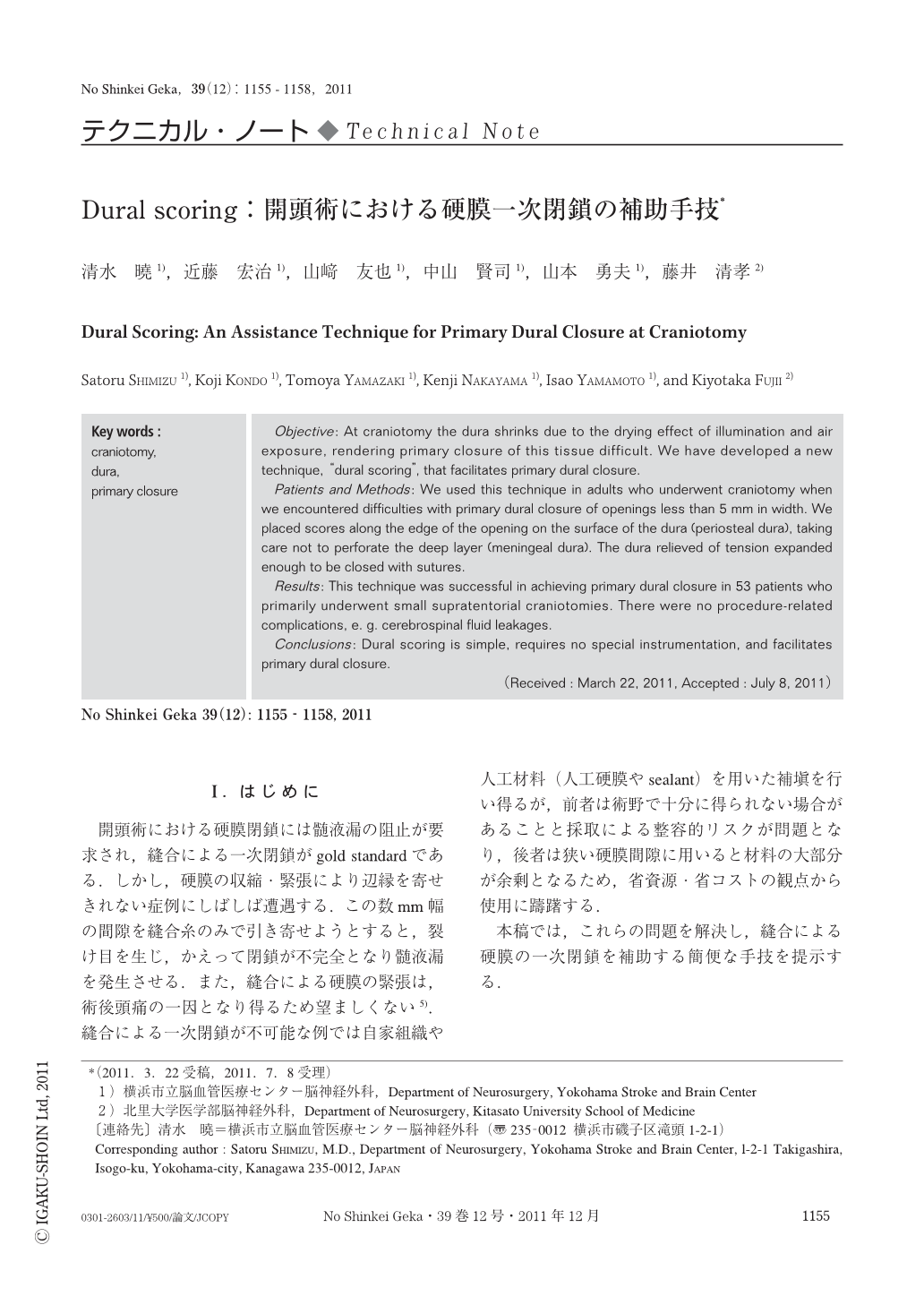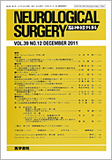Japanese
English
- 有料閲覧
- Abstract 文献概要
- 1ページ目 Look Inside
- 参考文献 Reference
Ⅰ.はじめに
開頭術における硬膜閉鎖には髄液漏の阻止が要求され,縫合による一次閉鎖がgold standardである.しかし,硬膜の収縮・緊張により辺縁を寄せきれない症例にしばしば遭遇する.この数mm幅の間隙を縫合糸のみで引き寄せようとすると,裂け目を生じ,かえって閉鎖が不完全となり髄液漏を発生させる.また,縫合による硬膜の緊張は,術後頭痛の一因となり得るため望ましくない5).縫合による一次閉鎖が不可能な例では自家組織や人工材料(人工硬膜やsealant)を用いた補塡を行い得るが,前者は術野で十分に得られない場合があることと採取による整容的リスクが問題となり,後者は狭い硬膜間隙に用いると材料の大部分が余剰となるため,省資源・省コストの観点から使用に躊躇する.
本稿では,これらの問題を解決し,縫合による硬膜の一次閉鎖を補助する簡便な手技を提示する.
Objective: At craniotomy the dura shrinks due to the drying effect of illumination and air exposure,rendering primary closure of this tissue difficult. We have developed a new technique,“dural scoring”,that facilitates primary dural closure.
Patients and Methods: We used this technique in adults who underwent craniotomy when we encountered difficulties with primary dural closure of openings less than 5 mm in width. We placed scores along the edge of the opening on the surface of the dura (periosteal dura), taking care not to perforate the deep layer (meningeal dura). The dura relieved of tension expanded enough to be closed with sutures.
Results: This technique was successful in achieving primary dural closure in 53 patients who primarily underwent small supratentorial craniotomies. There were no procedure-related complications, e. g. cerebrospinal fluid leakages.
Conclusions: Dural scoring is simple,requires no special instrumentation,and facilitates primary dural closure.

Copyright © 2011, Igaku-Shoin Ltd. All rights reserved.


